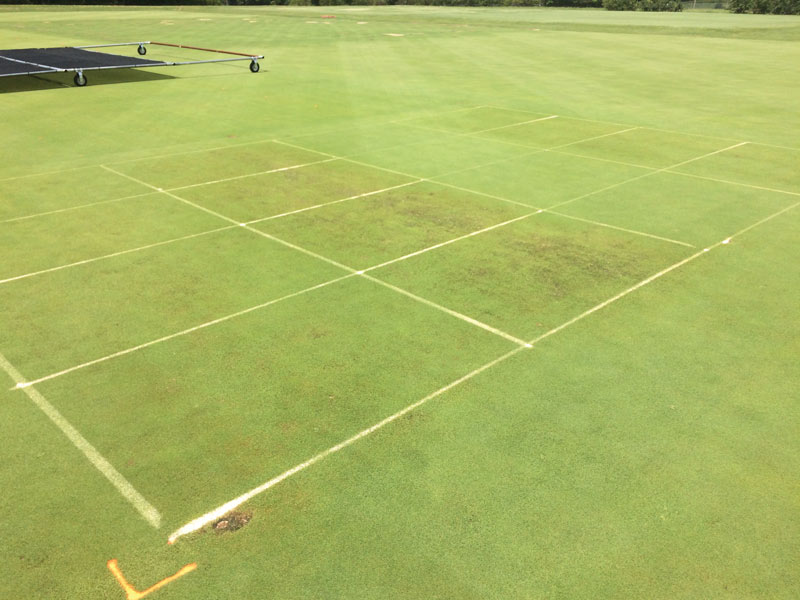
Photo by Travis Russell
Shade decreases photosynthetically active radiation (PAR), which limits turfgrass quality. The daily light integral (DLI) is the cumulative PAR for one day at a given site, and it has been shown to estimate the light requirements of various turfgrass systems effectively. However, the minimum DLI necessary to produce acceptable quality on a creeping bentgrass putting green has yet to be determined.
This research aimed to determine the DLI requirement of a creeping bentgrass green by evaluating the effects of shade intensity and timing. In addition, this study evaluated how applications of Primo Maxx (trinexapac-ethyl), a plant growth regulator known to increase shade tolerance, and Turf Screen, a turfgrass colorant marketed to increase photosynthetic efficiency, could influence minimum DLI requirements.
Four different shade-intensity treatments (0%, 70%, 80% and 90% shade) were applied to the turf in morning (sunrise to solar noon) or afternoon (solar noon to sunset) to observe differences in turf quality from May through October in 2016 and 2017. Quantum light sensors measuring cumulative PAR under each shade level were used to determine the DLI for each treatment.
After two years of shade treatments and quality evaluations, it was determined that the minimum DLI requirement for a Tyee creeping bentgrass green is 30 mol/square meter/day. Afternoon shade was more detrimental to turf health than morning shade in 2016, but there was no shade timing effect in 2017.
Although Primo Maxx and Turf Screen improved turf quality on late-summer rating dates, they did not significantly reduce the minimum DLI requirement of creeping bentgrass.
— Travis R. Russell; Douglas E. Karcher, Ph.D.; and Michael D. Richardson, Ph.D., University of Arkansas, Fayetteville
Editor’s note: An earlier version of this summary was published in the 2017 ASA-CSSA-SSSA Meeting Abstracts, ASA, CSSA and SSSA, Madison, Wis.
Teresa Carson is GCM’s science editor.